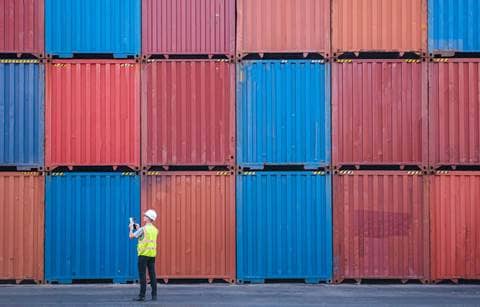As the Trump administration’s tariff and trade policies continue to evolve, there are critical areas around compliance and implementation that manufacturers must consider. If you’re wondering what to do next, the answer begins with what you definitely should not be doing: sitting on the sidelines hoping for it to go away.
The current tariff landscape is complex, and missteps in calculating or applying them can lead to severe penalties. The risks are compounded by the sheer volume of tariffs that could apply to the variety of goods within your supply chain. Penalties are the tip of the iceberg — recurring noncompliance could tarnish your business reputation and relationships with trading partners, potentially putting your business at risk. It’s important to act now to understand the current tariff actions and prepare for trade policy updates as they unfold.
Your first action should be assessing your financial exposure and determining how tariffs will impact your cost of goods sold. It’s a complex analysis with many nuances: in some cases, “tariff stacking” may expose you to multiple tariffs; in others, a tariff may be paused, or a trade agreement may provide an exemption to one product, but not another. Looking forward, the trade rules you’re comfortable working with today may soon change, as trade agreements are renegotiated.
Eight steps to conduct a tariff impact assessment
A detailed and strategic tariff impact assessment will help you understand where you have the most significant financial exposure to tariffs and provide you with the clarity needed to navigate these challenges. Let’s explore the eight essential steps.

1. Compile data and relevant documentation
Begin with data collection — the foundational step crucial for a successful assessment. This is a cross-functional task involving departments such as engineering, procurement, logistics, and finance. Compile documentation that includes part numbers, descriptions, current Harmonized Tariff Schedule (HTS) codes, duty rates, country of origin, and volume of spend. Accurate data inputs are essential for a reliable assessment.
2. Validate your bill of materials
Ensure that your bill of materials (BOM) accurately reflects the most recent engineering revisions. It should include the quantity and cost of raw materials and components, along with any recent amendments. Validating the BOM is a critical step, as inconsistencies here will lead to inaccurate tariff calculations.
3. Confirm country of origin
Determining the country of origin correctly is key to determining applicable tariffs and duty rates. Some companies mistakenly base this on the last place of shipment or processing, but you must also consider production locations for raw materials and components. In some cases, it will be necessary to conduct a supply chain mapping exercise to ascertain the true country of origin. Due to the complexities involved, consider consulting with your advisors to assist in this exercise.
4. Verify harmonized tariff schedule classification
HTS classification inaccuracies are common pitfalls. Verify that the correct HTS codes describe your products precisely, as classifications depend on descriptions, composition, and intended use. Correct classifications are essential for compliance with U.S. trade regulations and to guard against penalties. Previous classifications may need reevaluation, requiring adjustments where necessary.
5. Review trade agreements
Review trade agreements, such as the USMCA, to determine if any of your products qualify for treaty benefits and potential tariff exemptions. Staying updated on these can help unlock cost savings and prevent overpayment.
6. Calculate your exposure
With data gathered, calculate your exposure by determining the annualized cost impact of import duties at the raw material, component, and finished goods level. This step reveals where your primary tariff impacts are and is the key to prioritizing future mitigation activities effectively.
7. Document compliance
Rigorous documentation is vital in managing risk. Establish a framework for compliance and assign leads in your organization to develop clear procedures and monitor compliance. This should include:
- Developing structured compliance frameworks.
- Regularly checking and ensuring HTS codes are correctly applied.
- Updating and auditing documentation, such as import/export records.
- Establishing contingency plans for new policies.
- Review and update your internal controls, work closely with brokers to ensure all records comply with regulations, and bridge any gaps found during the assessment.
8. Monitor changes
The current trade landscape is dynamic. Stay informed through subscriptions or alerts from authorities like the U.S. Customs and Border Protection. Keep your documentation current, and assess the potential impact of new regulations immediately as they arise. Maintaining vigilance ensures you remain compliant and minimize disruptions.
Embrace proactive strategies
Navigating tariffs and trade policies effectively isn’t just about managing risks; it’s about strategically positioning your business amid constant change. The benefits of completing a tariff impact assessment are multifaceted. By understanding your exposure, you can reduce risk and position your company for quick action. The assessment results can be used to prioritize and focus mitigation efforts that will drive the greatest financial impact to finished goods, components, and raw materials, and they can be used to document impact in future customer recovery discussions and negotiations.
The ever-changing trade environment presents challenges but also opportunities. Robust assessments and proactive planning can transform potential disruptions into strategic advantages. Now’s the time to act, adapt, and thrive amid shifting trade landscapes.





